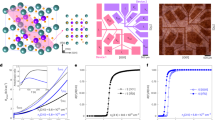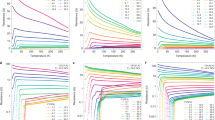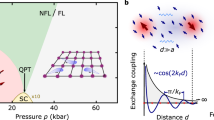Abstract
One challenge in condensed-matter physics is to unravel the interplay between magnetism and superconductivity in copper oxides with a high critical temperature (Tc). Kang et al.1 claim to have revealed a quantum phase transition from the superconducting to an antiferromagnetic state in the electron-doped material Nd2−xCexCuO4 (NCCO) based on the observation of magnetic-field-induced neutron-scattering intensity at (1/2,1/2,0), (1/2,0,0) and related reflections. Here we argue that the observed magnetic intensity is due to a secondary phase of (Nd,Ce)2O3. We therefore contend that the effect is spurious and not intrinsic to superconducting NCCO.
This is a preview of subscription content, access via your institution
Access options
Subscribe to this journal
Receive 51 print issues and online access
$199.00 per year
only $3.90 per issue
Buy this article
- Purchase on SpringerLink
- Instant access to full article PDF
Prices may be subject to local taxes which are calculated during checkout

Similar content being viewed by others
References
Kang, H. J. et al. Nature 423, 522–525 (2003).
Tokura, Y., Takagi, H. & Uchida, S. Nature 337, 345–347 (1989).
Moon, R. M., Koehler, W. C., Child, H. R. & Raubenheimer, L. J. Phys. Rev. 176, 722–731 (1968).
Author information
Authors and Affiliations
Corresponding author
Rights and permissions
About this article
Cite this article
Mang, P., Larochelle, S. & Greven, M. Spurious magnetism in high-Tc superconductor. Nature 426, 139–140 (2003). https://doi.org/10.1038/426139b
Issue date:
DOI: https://doi.org/10.1038/426139b
This article is cited by
-
Synthesis, crystal structure, and optical properties of a novel rare-earth complex Nd(C2F5COO)3 · Phen
Structural Chemistry (2008)



